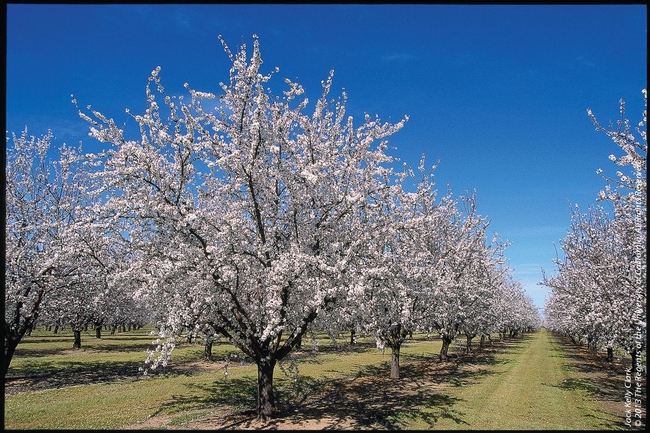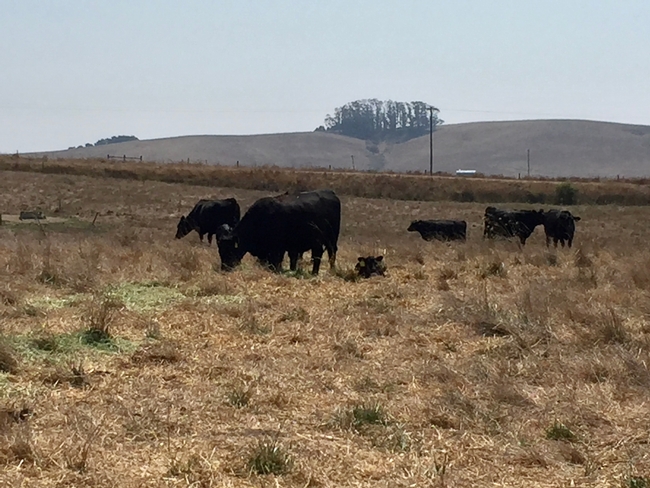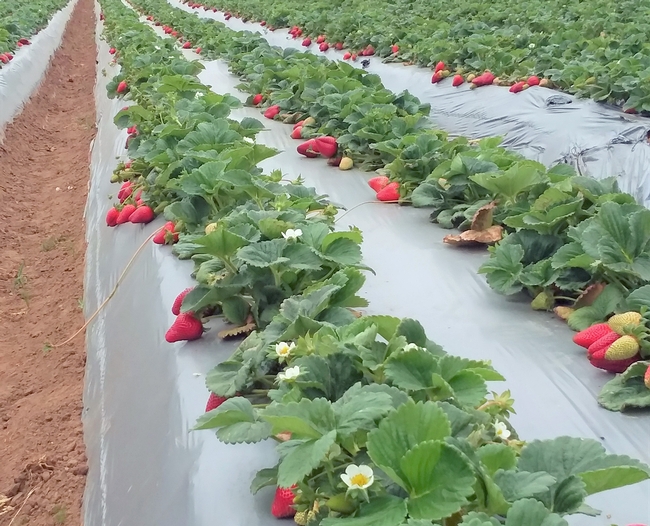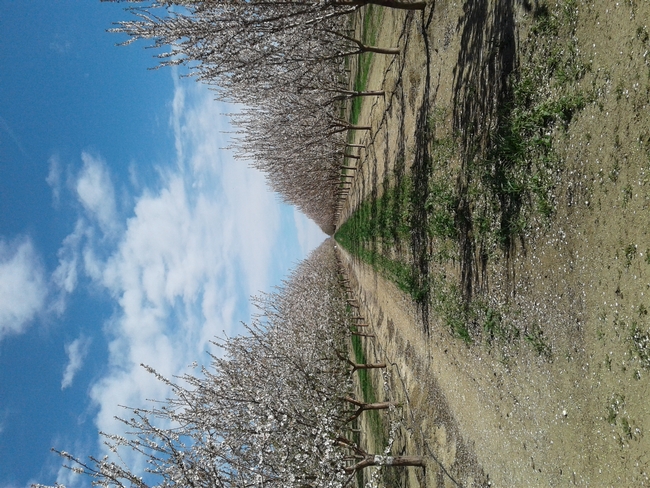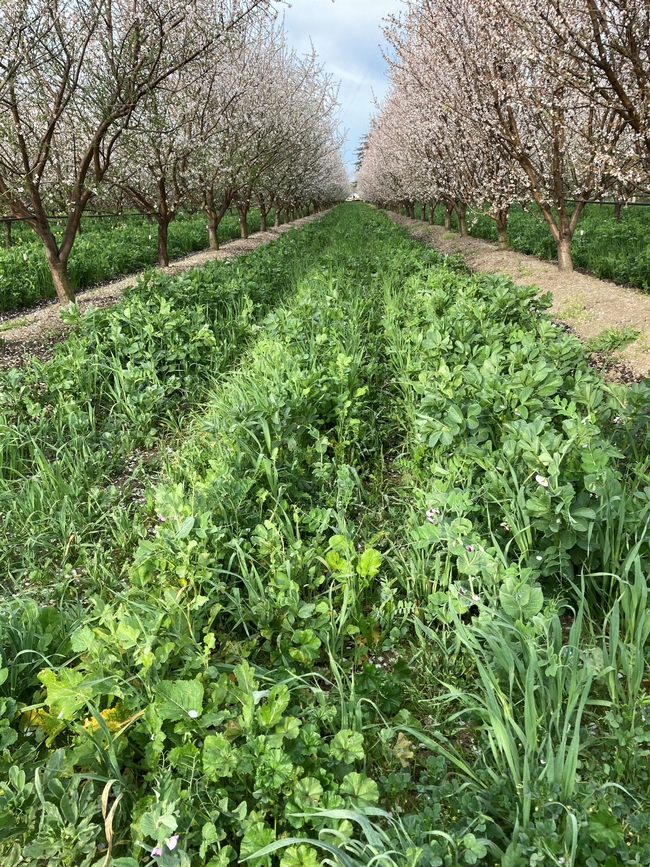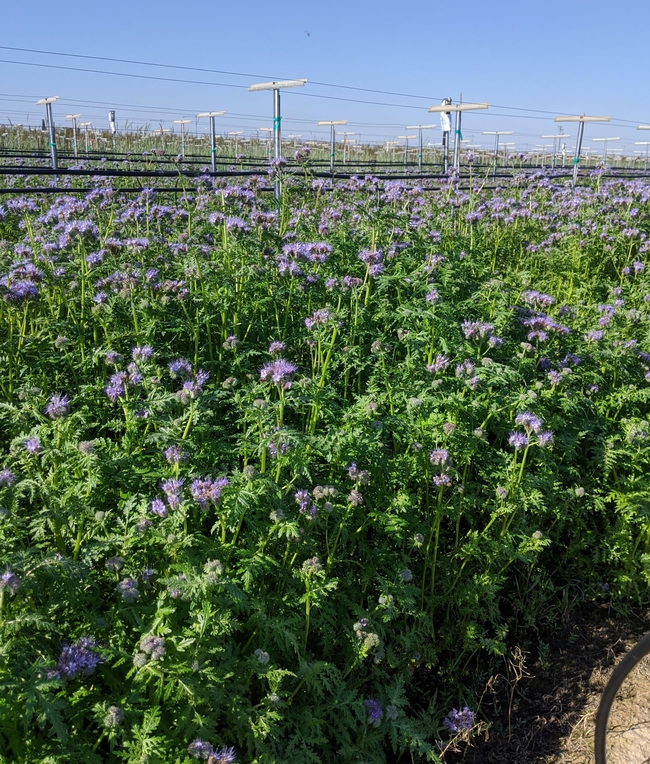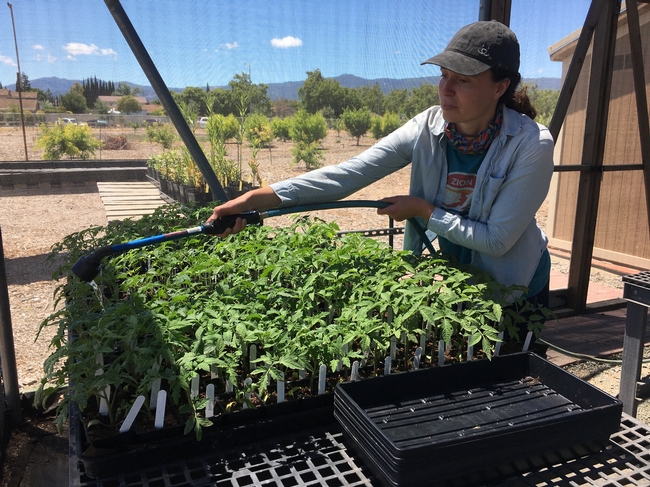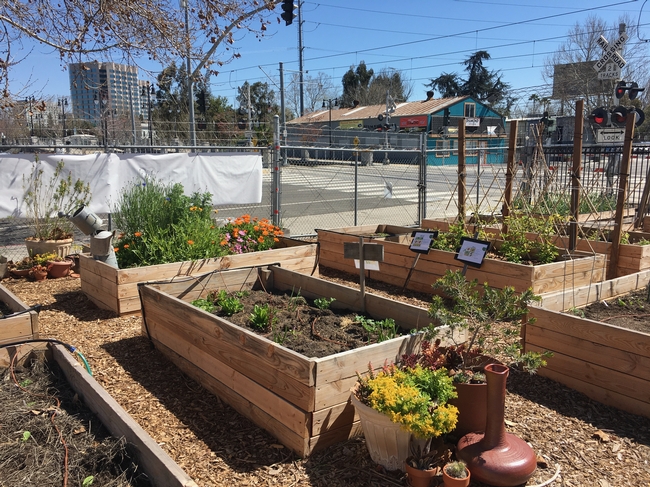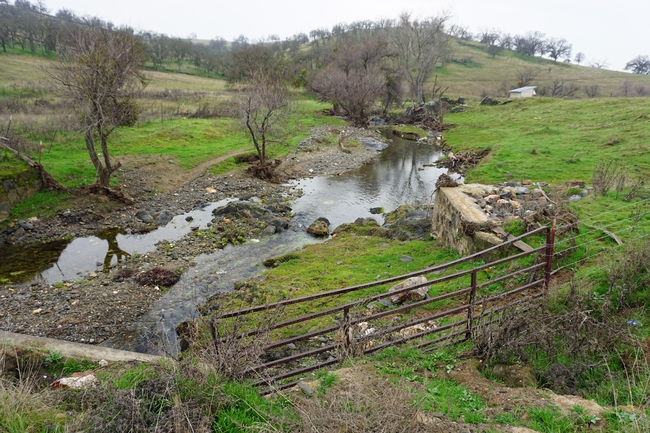Posts Tagged: drought
'Exceptional' Drought, What to do? With Alfalfa-Start Early!
JUST HOW DRY IS IT? It really doesn't look good out there for many western alfalfa growers. Most parts of the West are currently under 'severe,...
Drought pushes California farmers and ranchers to adapt to a drier future
Despite historic drought, farms and ranches may receive normal revenue
Despite recent rains, the 2020–21 drought has been unusually severe. Low precipitation, coupled with high evaporation has affected irrigated crops and livestock pastures. Yet California farmers and ranchers are adept at adapting. Despite record-setting drought conditions and hundreds of thousands of acres left unplanted, California farms and ranches, as a whole, may generate normal revenue in 2021, according to the authors of a new special issue of ARE Update focusing on the drought.
The 2020 water year (which ran from October 2019 through September 2020), was dry and hot in California, with the warmest April through September since 1895. It was followed by the third driest year since 1895 – receiving about half of the average 20th century rainfall. Consecutive years with record-setting warm, dry conditions have led to higher evaporative demand. Some regions, particularly the Sacramento Basin, have been hit especially hard by this ongoing drought.
California farmers have adapted to the resulting water shortages by transferring scarce irrigation water to crops that have a higher expected net revenue per drop of water, such as fresh produce and nuts, while leaving some fields unplanted. Due to decreased pasture forage, livestock producers have had to cull mature cows and ship more feeder cattle out of state.
“The dairy industry has had strong production and good revenue, but has faced high feed costs in 2021 that reduced net returns,” said special issue co-editor Daniel Sumner, UC Davis agricultural economist.
The drought's impact on farm revenues and prices in California has varied across crops and regions. Agricultural production on the coast (e.g., vegetables, berries and wine grapes), which accounts for 25% of farm output, is less likely to experience irrigation cutbacks during a drought. Consumers will notice few major price increases for California produce because farmers shifted water to these high-revenue crops in which California specializes.
The special issue on drought concludes with an explanation of policy changes that have improved the California water system in the past and envisions how policy changes might mitigate impacts of future droughts. Legislation such as the Sustainable Groundwater Management Act (SGMA) will facilitate adapting to new climate realities by incentivizing water trading and banking, which allow water users to better allocate water across space and time.
Most groundwater agencies are still assessing the best way to bring their overdrafted groundwater basins into compliance with SGMA, with almost 80% planning to recharge groundwater through increasing supply (e.g., recharge or surface water trading) rather than reducing water demand (e.g., pumping restrictions).
“No one single solution exists for California's water challenges, but there's a lot of potential to make improvements to the current system,” said Ellen Bruno, special issue co-editor and UC Berkeley agricultural economist. “Improving the allocation of water through various policy changes could help water users adapt to water scarcity.”
To learn more about the impact of the ongoing drought on California agriculture, read the full Special Issue of ARE Update 25(1), UC Giannini Foundation of Agricultural Economics, online at https://giannini.ucop.edu/publications/are-update.
ARE Update is a bimonthly magazine published by the Giannini Foundation of Agricultural Economics to educate policymakers and agribusiness professionals about new research or analysis of important topics in agricultural and resource economics. Articles are written by Giannini Foundation members, including University of California faculty and Cooperative Extension specialists in agricultural and resource economics, and university graduate students. Learn more about the Giannini Foundation and its publications at https://giannini.ucop.edu.
Can California native plants be used as cover crops to benefit farmers and native ecosystems?
In late February, in an almond orchard in the Sacramento Valley, the fall-planted cover crop mix of grasses, brassicas and legumes had barely produced a green fuzz above the soil surface, and it was unclear when it would bloom. Unfortunately, this scene is becoming more frequent across California, as climate change causes more prolonged droughts and rain-dependent winter cover crops can barely grow, which delays or reduces bloom, essential for supporting pollinators. Fortunately, California native plant species have evolved with drought and have developed many strategies to survive and reproduce in those conditions.
Would it be possible to capitalize on the over 9 million acres of cropland in California for drought resilience and habitat restoration by utilizing more native species as cover crops? Our team at the UC Sustainable Agriculture Research and Education Program (UC SAREP) spent some time considering various native plant species and their potential ecological and operational attributes as cover crops. For a full list of species and their attributes, see https://ucanr.edu/sites/covercrops/.
Many native species are so well adapted to drought that they will still germinate and bloom during extremely dry years, for example, annuals like Tidy Tips (Layia platyglossa) and California poppy (Eschscholzia californica). Alternatively, perennial bulb species like Prettyface (Triteleia ixioides) and Bluedicks (Dipteronstemon capitatus) become dormant during the dry summer, retaining their bulbs below ground and re-growing when the rains return. These species could perhaps fit well in no-till orchard systems. Summer dormancy is important for tree nut growers because they usually need clean ground under the trees during harvest. Moreover, the costs to terminate and reseed would potentially be eliminated. While these species are well-known by Native Americans for their edible bulbs, at this point in time, we are not aware of any cover cropping trials having ever been conducted with these species.
Another species with strong reseeding and more availability is the annual Lacy Phacelia (Phacelia tanacetifolia), which offers an intriguing historical precedent for developing a native species for cover cropping purposes. Native to California, it was introduced into Europe in 1832 by Germans. It is very attractive to pollinators and experienced a boom there in the early 1990s. European beekeepers and farmers have been using Lacy Phacelia as a cover crop ever since, and it has recently been gaining traction on California farms as well. California has many species of phacelia, with another, described as being even more attractive to native bees, being the annual Great Valley Phacelia (Phacelia ciliata). Besides supporting native bees, other native plant species can contribute nitrogen to the soil, such as annual Lupine (Lupinus spp.) and perennial Deerweed (Acmispon glaber), which are legumes and form an association with nitrogen-fixing bacteria in their roots.
Cover crops are not usually considered marketable crops. However, we should not preclude the potential for some plants that are useful as cover crops to provide a harvestable product as well. Native perennial fiber plants such as Indian hemp dogbane (Apocynum cannabinum), narrow leaf milkweed (Asclepsias fascicularis), and common nettle (Urtica dioica) could offer the opportunity to cultivate summer cover crops that have a market value, especially in cases where farmers are already willing to irrigate their cover crops to improve their development and amplify the benefits. Bowles Farming in the San Joaquin Valley is experimenting with growing these three species for fiber production. All three also attract native bees and important butterfly species such as monarchs (as long as farmers avoid spraying insecticides).
While we believe that some native species could open new opportunities for farmers as cover crops, we still have insufficient studies testing the effects and viability of these species. Organizations like the NRCS Plant Materials Center at Lockeford and the Xerces Society are conducting practical studies with native species, creating plant guides and working with farmers to expand their use. In addition, researchers Lauren Hale of the USDA Agricultural Research Service and Anil Shrestha of California State University, Fresno, are using a 2021 UC SAREP small grant to study the effects of native species mixes on water demand and weed populations in San Joaquin Valley grape vineyards. Hale suggests that below-ground ecosystems may benefit as much from native plants as above-ground ecosystems. Says Hale, “Because plants and their microbiomes have evolved together for millennia, it seems logical that native plants would promote a good response from the native soil microbiota.”
For additional information:
UC SAREP List of California Native Species for Potential Use as Cover Crops: https://ucanr.edu/sites/covercrops/
Xerces Society lists of pollinator-friendly native species for California: https://xerces.org/pollinator-resource-center/california
NRCS California Plant Materials Center plant guides: https://www.nrcs.usda.gov/wps/portal/nrcs/publications/plantmaterials/pmc/west/capmc/pub/
UC SAREP Cover Crops Database: https://sarep.ucdavis.edu/covercrop
Drought hurts urban farmers, too
Extreme drought is changing agriculture across California — and urban farming is no exception.
Many community farms and gardens cultivate land owned by city or county departments, schools and private landowners. Lucy Diekmann, a UC Cooperative Extension urban agriculture and food systems advisor in Santa Clara County, says that how those institutions handle rationing or surcharges set by water retailers makes all the difference for urban farmers. Diekmann co-authored a 2017 study looking at how urban agriculture in Silicon Valley was affected by the last period of extreme drought.
For example, priced-based water conservation strategies had very different outcomes depending on the landowner. Diekmann and her co-authors learned that three-quarters of Santa Clara County's community farms had their water bill paid by a project sponsor such as a nonprofit or school, and the sponsor absorbed the increased costs. On the other hand, one city-run community garden raised fees by 27% in one year to discourage water use. Some gardeners either left, dropped off the waitlist or chose smaller plots.
Diekmann and her co-authors point out that a major challenge for water management in urban agriculture is the lack of data. Many community farms and gardens don't have their own meters.
"We recommend that cities and counties subsidize the cost of meters, give financial support for installing watering systems that support conservation, and offer irrigation training," Diekmann said.
Because the water landscape is so uneven for urban farmers — usually in ways that benefit well-resourced groups — Diekmann and her co-authors also write that “affordable, consistent water prices for all UA (urban agriculture) users” must be part of all cities' urban agriculture policy portfolios.
You can read Diekmann's full study at https://www.tandfonline.com/doi/full/10.1080/13549839.2017.1351426.
There’s a danger in over-simplifying California water conservation
You hear it every time drought returns to California: “Turn off the faucet when you brush your teeth.” “Collect shower water in a bucket before it warms up.”
While valuable, these tried and true drought resilience strategies can also deflect attention from the monumental challenges posed by droughts to natural areas, waterways, agriculture and people in California. Far-sighted and discerning management of the state's annual precipitation and groundwater is critical, particularly as droughts become more frequent due to climate change, said Faith Kearns, the academic coordinator of UC's California Institute for Water Resources.
“Like so many big societal problems, we don't want to get caught up believing individual actions alone will solve this problem,” Kearns said. “Conserving water in households can help people feel activated and certainly conserve some water. But, at the same time, it's not enough. We have big, systemic issues to deal with.”
Urban water use in homes, landscapes, schools and businesses amounts to about 10% of total developed water use in California, according to the Northern California Water Association. Irrigated agriculture uses 41%. The remaining 51% is used for water in rivers protected by state and federal laws as “wild and scenic,” water required for maintaining habitat in streams, and water that supports wetlands in wildlife preserves.
Traditionally, when surface water supplies for California farmers are cut during droughts, farmers pumped groundwater to bridge the gap. Over time, many of the state's groundwater basins have become severely depleted. In 2014, during a devastating five-year drought, the California Legislature passed the Sustainable Groundwater Management Act to regulate groundwater use in the state for the first time. The law aims for sustainable groundwater maintenance by 2040.
“We're in the implementation phase and local groundwater agencies are in various stages of developing and implementing sustainability plans,” Kearns said. “This is an opportunity for public participation to ensure all voices are heard in the effort.”
Of particular concern are underserved rural families who rely on wells for their household water. When the water table drops due to excessive pumping, the families can be left without water for drinking, washing and bathing. Small scale farmers often meet the same fate. Larger, neighboring farms may be able to drill deeper wells.
Wintertime flooding in permeable areas is one way groundwater can be recharged as it is used during the dry season. Getting access to water, developing infrastructure and flooding large farms will allow water to seep back into aquifers. Small-scale farmers can also be involved, said Ruth Dahlquist-Willard, the UC Cooperative Extension advisor to small-scale farmers in Fresno and Tulare counties.
“If there was a way to incentivize recharge on small farms, I think we could really contribute to groundwater management,” Dahlquist-Willard said. “It is not just about how we protect small farmers but also about how we involve them and have something that works for everyone's benefit.”
Fallowing land will likely be needed to meet the groundwater law's sustainability requirements. A 2020 report by UCCE specialist David Sunding and UC Berkeley professor David Roland-Holst, Blueprint Economic Analysis: Phase One Results, estimates about 992,000 acres of California farmland will go out of production, representing $7 billion in lost crop revenue and $2 billion in lost farm operating income.
The public can support smart and equitable water management by learning about decisions being made by their own local water providers and elected government representatives that impact the future of the California water supply. UC Agriculture and Natural Resources and its California Institute of Water Resources have gathered materials to serve as a starting point for understanding and advocating for sustainable water.
Science-based drought tipsheets
Online drought and water management seminar series
Listen to these episodes of the Water Talk podcast:
Episode 02: Ranching and Water in California — Water Talk
Episode 09: Small Farms and Water in California — Water Talk
Episode 10: California Water Policy and Extension — Water Talk
Episode 15: Wild Horses and Water in California — Water Talk
Episode 16: Agriculture in the California Borderlands — Water Talk
Episode 21: Watering Urban Green Spaces — Water Talk
Find more on the UC California Institute for Water Resources website.


